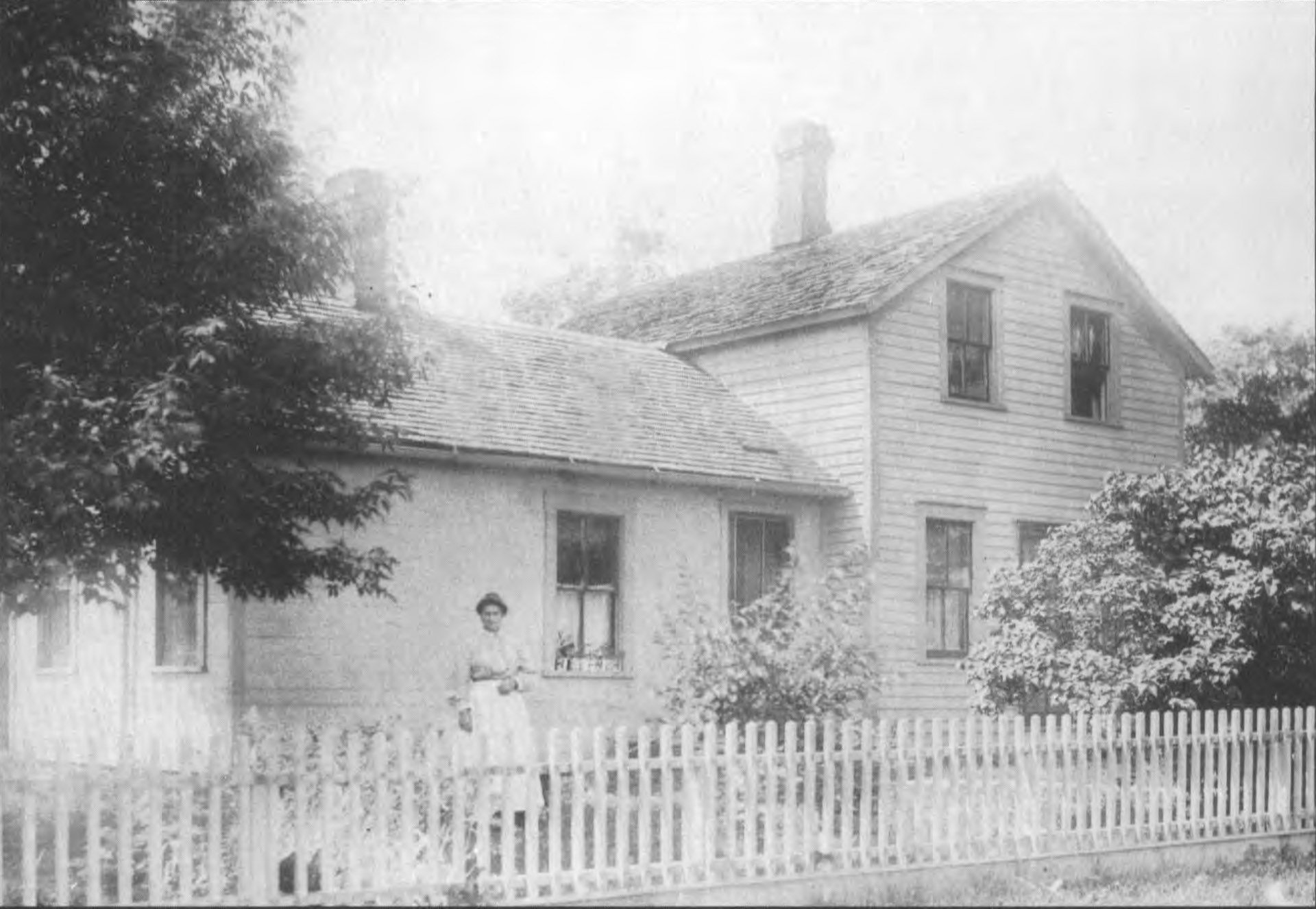Life in 1900: Hastings History and the Iconic Schwartz House
Schwartz House, 510 E. Sixth, about 1900. Angeline Schwartz. Nick Schwartz, a painter and wallpaper hanger, and his wife Angeline raised their five children in this well-kept house. Image Hastings Historic Handbook.
A Journey Back in Time
Imagine stepping into historic Hastings in the early 20th century, where horses clip-clop down dusty roads, news travels no faster than a telegraph wire hum, and the simple warmth of a kerosene lamp illuminates the night. It’s 1900, and the bustling town offers a glimpse into a world vastly different from our modern era. In the heart of this thriving community, the Schwartz family—Nick Schwartz, a skilled painter and wallpaper hanger, and his wife Angeline—are raising their five children in a charming home at 510 E. Sixth Street. Their story, intertwined with the essence of Hastings’ history, provides a vivid window into life over a century ago.
The Schwartz House: A Well-Kept Home
Nick Schwartz’s house stood as a testament to the family’s industrious nature and commitment to community. The house, divided into two sections, featured a single-story stucco portion and a taller two-story wooden structure. Encased by a white picket fence, it was a picture of care and craftsmanship. The scent of fresh paint and the smooth touch of newly hung wallpaper inside reflected Nick’s professional pride. Imagine Nick dipping his brush into vibrant pigments, the smell of turpentine filling the room as he created a masterpiece for a neighbor’s home.
Outside, Angeline might have tended a garden filled with rhubarb and zinnias, her children playing tag under the shade of the big maple tree. A neighbor might call from the road, and Nick would pause, leaning against the picket fence, apron dusted with paint, to share the news of the day.
Hastings, 1900: A Snapshot of Community Life
Hastings was a vibrant town in 1900, transitioning from its pioneer roots into a thriving center of commerce and community. The Mississippi River’s deep channel at this bend continued to make Hastings an essential hub for steamboats and trade. The clatter of carriages on cobblestone streets was punctuated by the whistle of trains at the depot. The Spiral Bridge, though built for horse-and-buggy traffic, was a marvel of ingenuity, uniting the two sides of the town.
Shops along Second Street boomed with activity. Dry goods stores, apothecaries, and milliners catered to the needs of families like the Schwartzes. On Sundays, families gathered at church, dressed in their finest attire, creating a rich culture of faith and fellowship. Meanwhile, farmers brought produce to market—corn, wheat, and apples—a bounty of the fertile Minnesota soil.
How Life in 1900 Differs from 2025
In Nick Schwartz’s time, life was lived at a slower pace—a stark contrast to the frenetic, technology-driven lives we lead in 2025. Consider this: while we rely on Google Maps, Nick navigated Hastings by landmarks and memory. Where today we might binge-watch a Netflix series, the Schwartz family would gather around the piano or enjoy stories by candlelight.
Transportation meant harnessing a horse, not starting an electric car. Communication involved writing letters—carefully penned with ink and delivered days later—instead of firing off a text message. Nick and his family relied on their hands and hearts for entertainment and connection, weaving tighter bonds within their community.
But not everything was idyllic. Medical advancements we take for granted today—antibiotics, vaccines, and anesthesia—were still decades away. Life expectancy was shorter, and the risks of everyday life were higher. Yet, people like Nick persevered, finding joy in the ordinary.
Through Nick’s Eyes: A Day in 1900
Picture Nick waking before dawn, his hands rough but steady as he prepares a hearty breakfast on the cast-iron stove. The smell of fresh bread fills the air as he plans his work for the day—painting a neighbor’s parlor or hanging intricate wallpaper in a grand dining room. As the sun rises higher, the children tumble out the door, their laughter echoing down the street. Angeline, ever the diligent homemaker, might sew patches onto clothes or barter fresh eggs with a neighbor.
In the evening, Nick sits by the fire, his brushstrokes slower now as he repairs a cherished family portrait. The shadows flicker on the walls, creating a dance of light and dark. The day ends with quiet prayer and the soft hum of a lullaby, as the children’s eyelids grow heavy. It’s a life of grit, grace, and gratitude—a life where every moment feels earned.
Why the Schwartz Story Matters
The Schwartz House stands as a vital piece of local history, reminding us of the resilience and dedication of families who shaped Hastings. This well-preserved historic home reflects the values of preservation and community spirit. Nick Schwartz’s role as a painter and wallpaper hanger contributed both artistry and functionality to Hastings homes, making his work a significant chapter in the story of historic homes in this area. Meanwhile, Angeline’s nurturing efforts supported a strong family foundation, echoing the timeless importance of community and connection. Together, their story encapsulates the essence of local history—a bridge between the past and the present, rooted in a commitment to preservation and shared heritage.
The Schwartz House reminds us that history isn’t just about grand events or famous people. It’s about ordinary families living extraordinary lives through their resilience and love for their community. Nick Schwartz’s work as a painter and wallpaper hanger contributed beauty to Hastings, while Angeline created a nurturing home for their children. Together, they built a legacy that still resonates in the well-kept house on E. Sixth Street.
A Metaphor for Hastings
The Schwartz House is like Hastings itself: solid, hardworking, and full of character. Its white picket fence, though modest, was a gateway to dreams. Its walls, painted with care, echoed the love and labor that defined the town. And just as Nick’s brush brought color to homes, the people of Hastings have brought vibrancy to their community for generations.
Conclusion: Honoring the Past, Building the Future
As we stand in 2025, surrounded by technological marvels and fast-paced lives, it’s worth pausing to reflect on the world Nick Schwartz knew. His story, and that of his family’s home, is a bridge connecting us to a simpler, yet profoundly meaningful, time. The Schwartz House at 510 E. Sixth is more than just a historic landmark; it’s a symbol of what makes Hastings special—a community that values its history, its people, and its stories.
Plan your visit to Hastings and explore its rich history—walk the streets that Nick once walked, visit the sites that preserve our past, and immerse yourself in the stories that built this community. Together, we can honor Nick’s legacy and continue painting a vibrant future that generations will one day remember. Because, like the Schwartz family, we too are painting a future that generations will one day remember.

